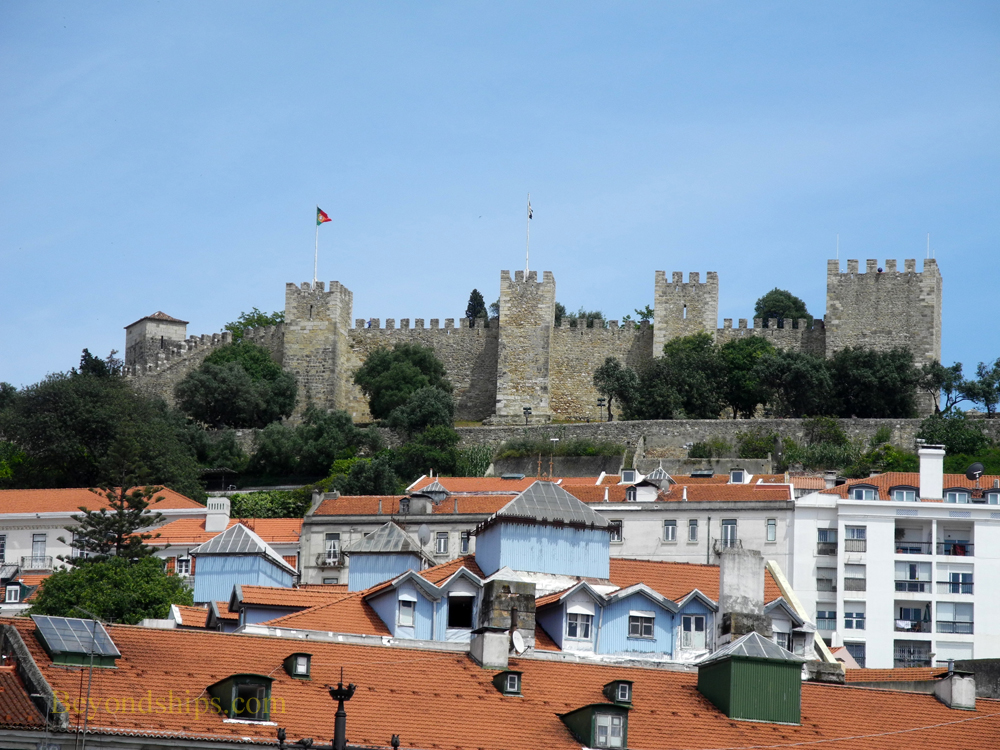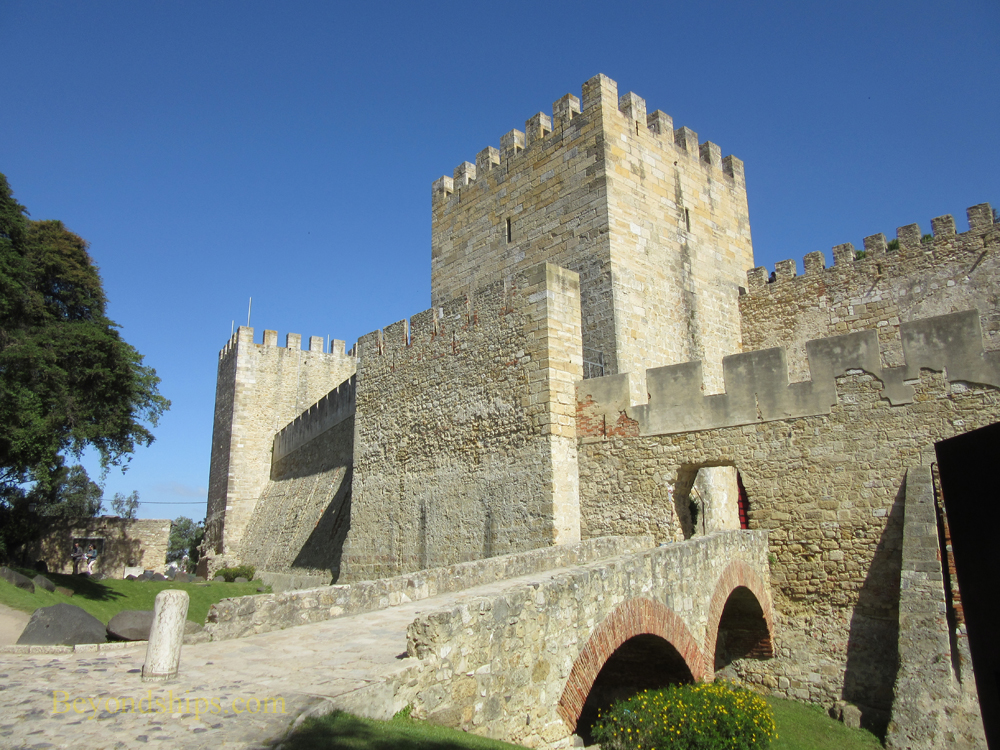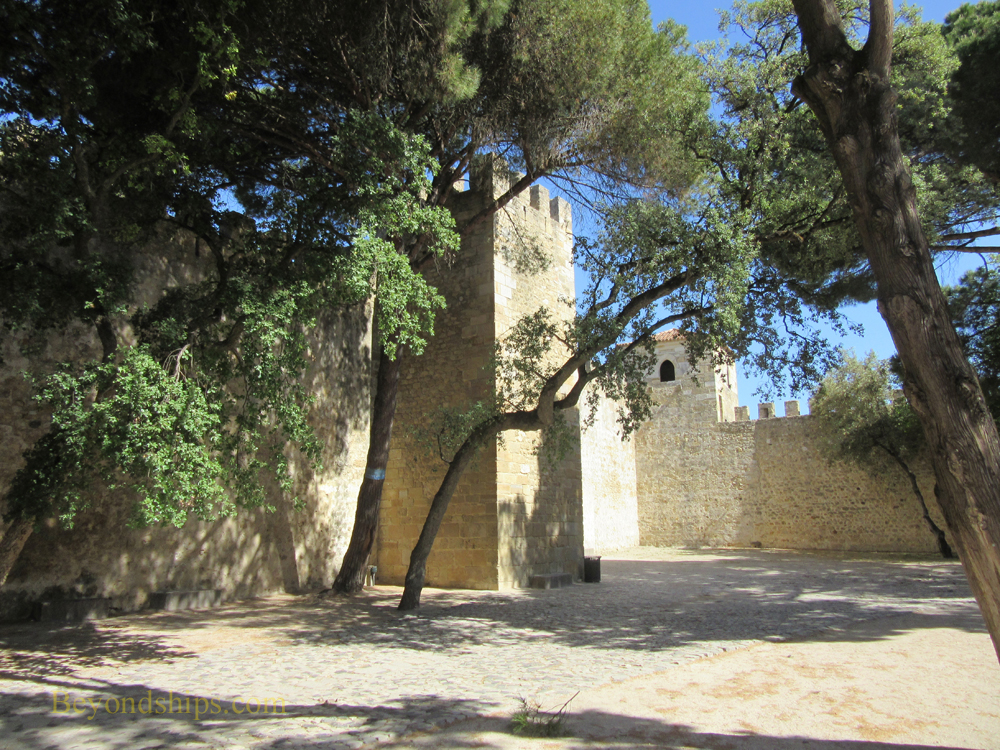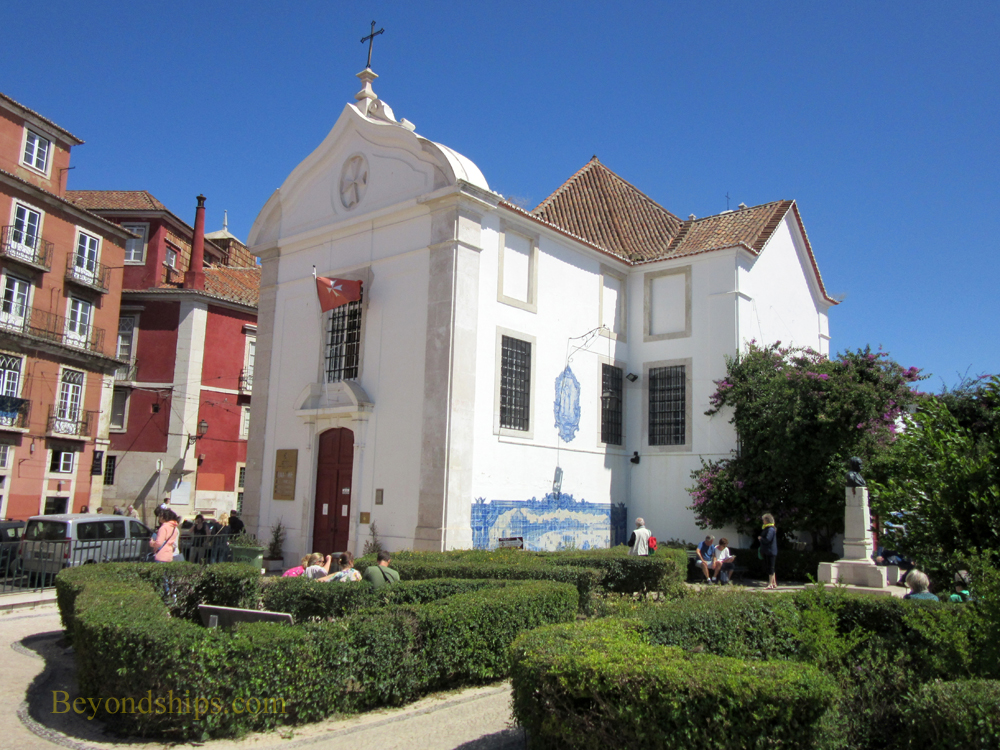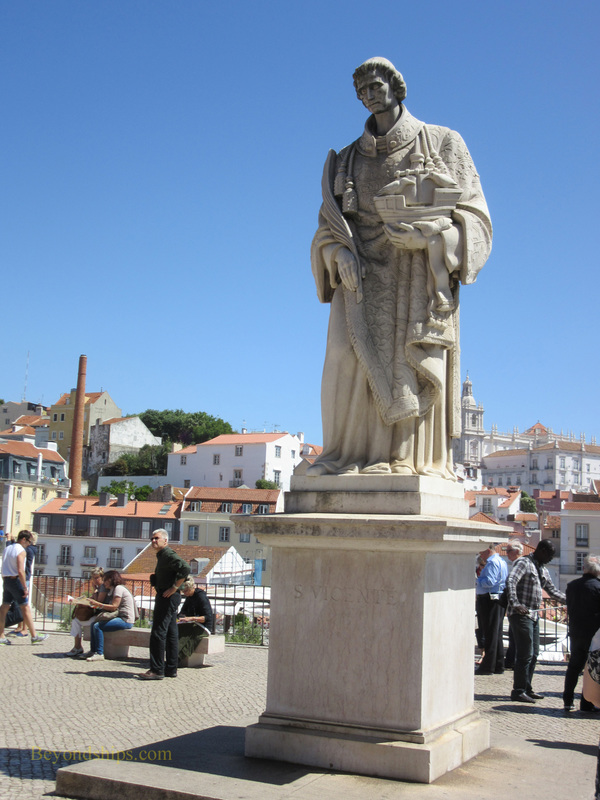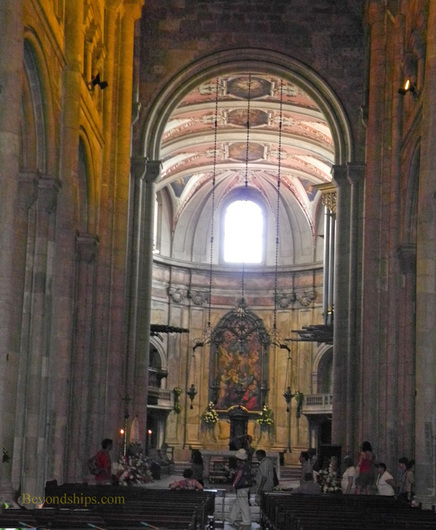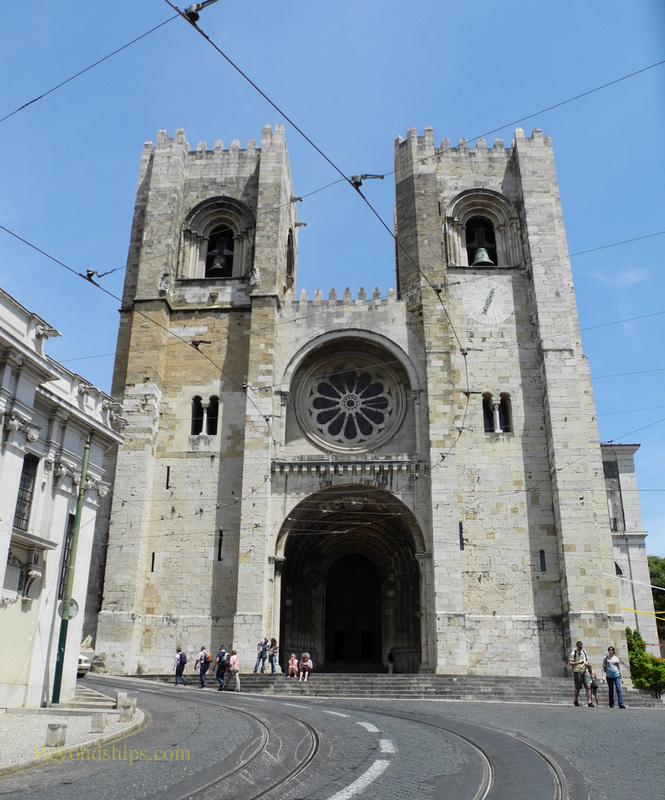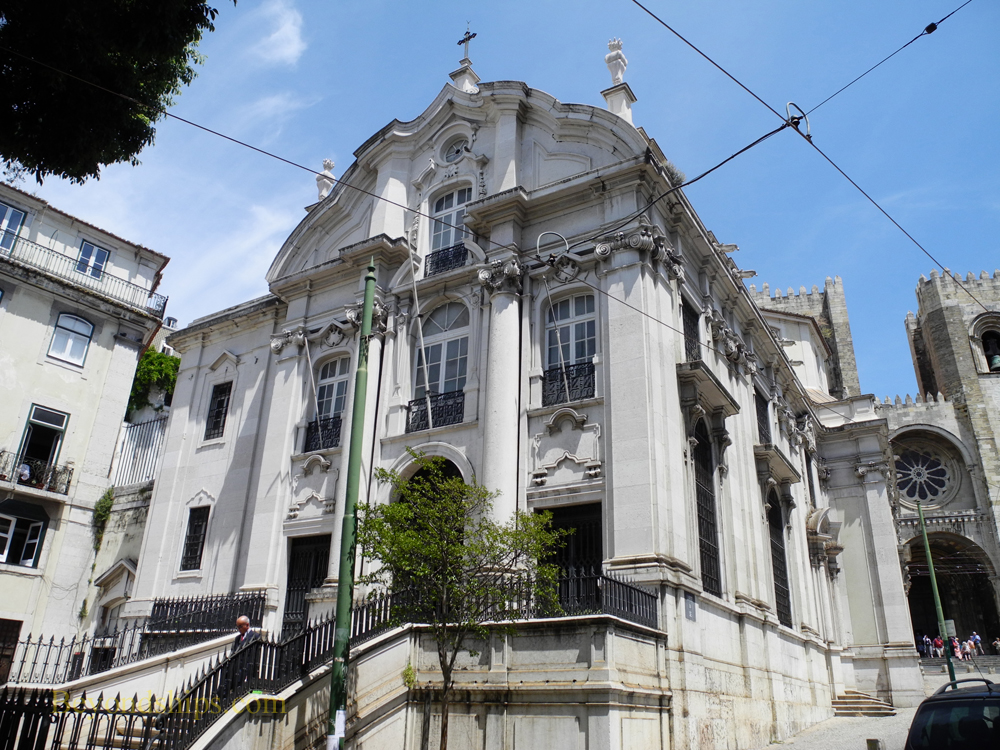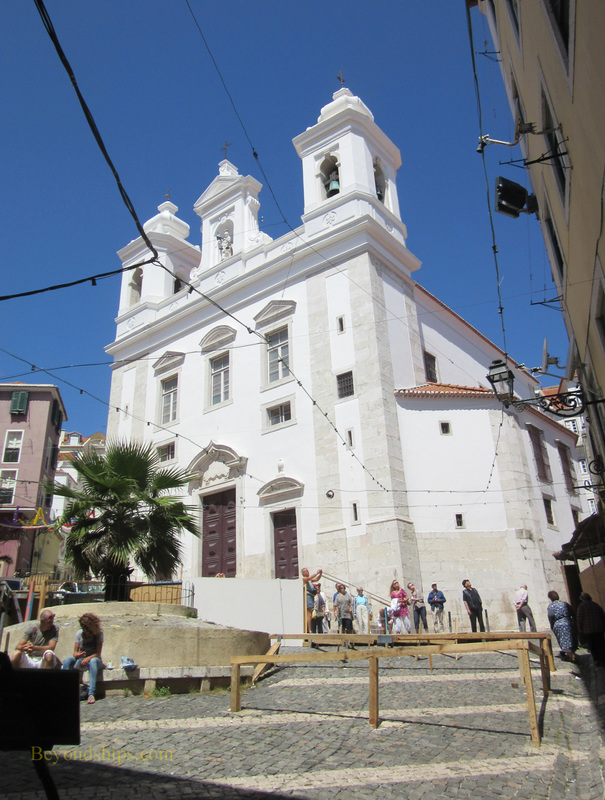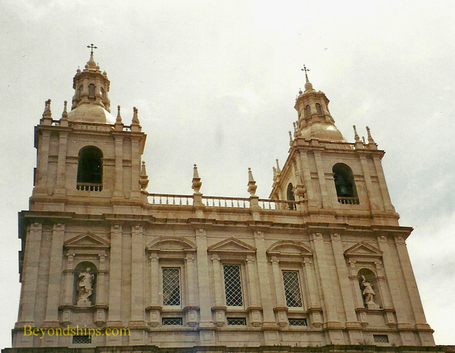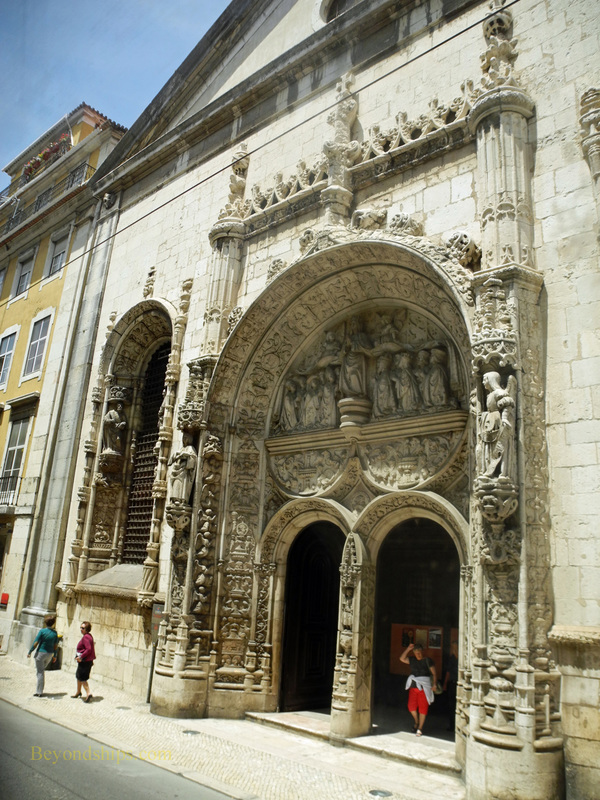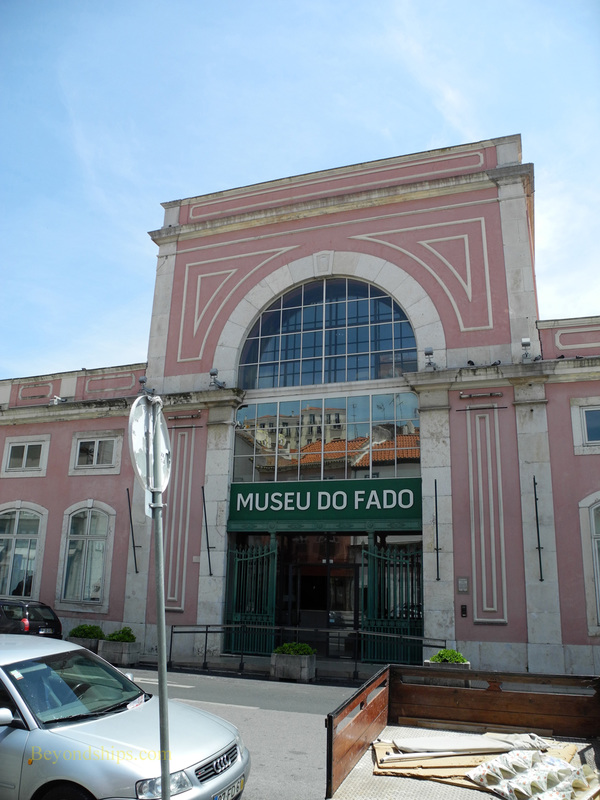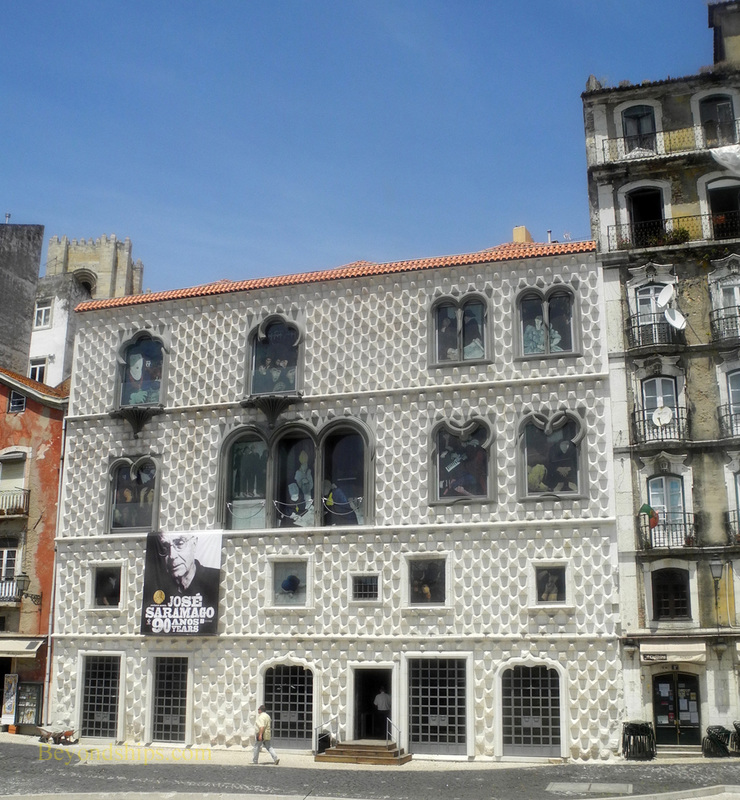|
The Alfama district is the oldest district in Lisbon. Because it is built on bedrock, it did not suffer the same degree of devastation as other Lisbon districts. Consequently, it retains an atmosphere that is different than the rest of the city.
For many years, the Alfama had a reputation as being one of the poorest districts in Lisbon. However, in recent years, its location and character have drawn more prosperous residents and there is a mixture of rent-controlled properties neighboring gentrified rehabilitated buildings. A maze of narrow winding streets, the Alfama is built atop a steep hill. As such, perhaps the easiest way to explore it is to take a tram up the hill from the Baixia district and then walk down. |
|
|
On the slope of the hill below St. George Castle is the small baroque Church of Santa Luzia begun in the 12th century. On the side of the church are two tile murals, one depicting the Palace Square before the earhquake and another showing crusaders storming the St. George Castle Surrounding it is a terrace and garden known as Miradouro de Santa Luzia, which affords panoramic views over the Alma district and the river beyond.
Another viewing platform, the Miradouro des Portas de Sol, is a few yards down the hill centered upon a statue of St. Vincent. |
|
Lisbon Cathedral (aka Se Cathedral) is the city's oldest building. It was begun in 1150 for the city's first bishop, an Englishman, Gilbert of Hastings. Begun shortly after the Christian reconquest of Lisbon, the cathedral is on the site of a former mosque. The cathedral is primarily Romanesque but also has Gothic elements. Reflecting medieval tastes, the interior of the cathedral is rather dark and austere. The remains of the city's patron saint, St. Vincent, are said to be in a silver casket in the sacristy.
|
|
Nearby is the small Igreja Santo Antonio. It is believed to be built on the site where St. Anthony was born in 1195. An earlier church here was destroyed in the Earthquake of 1755 and thus the current Baroque church dates from the 18th century. An unusual tradition here is the mass weddings that take place in June.
|
|
Tucked away in its narrow streets, the Alfama has a number of other small interesting churches such as the Church of Sao Miguel (above), Sao Vicente de Flora Monastery (above right) and the Church of Nosa Senhora da Conceicao Velha (right).
But the Alfama is not just churches. In addition to the cafes and restaurants, there are attractions such as the Fado Museum, which tells the story of the traditional music that was born in the Alfama (below). There are also interesting buildings such as the House of Spikes or Casa dos Bicos (below right). A 16th century palace, its facade is covered with hundreds of diamond shaped protrusions. |
|
|
|
|
Cruise destination - - Lisbon, Portugal - Attractions - Alfama District
